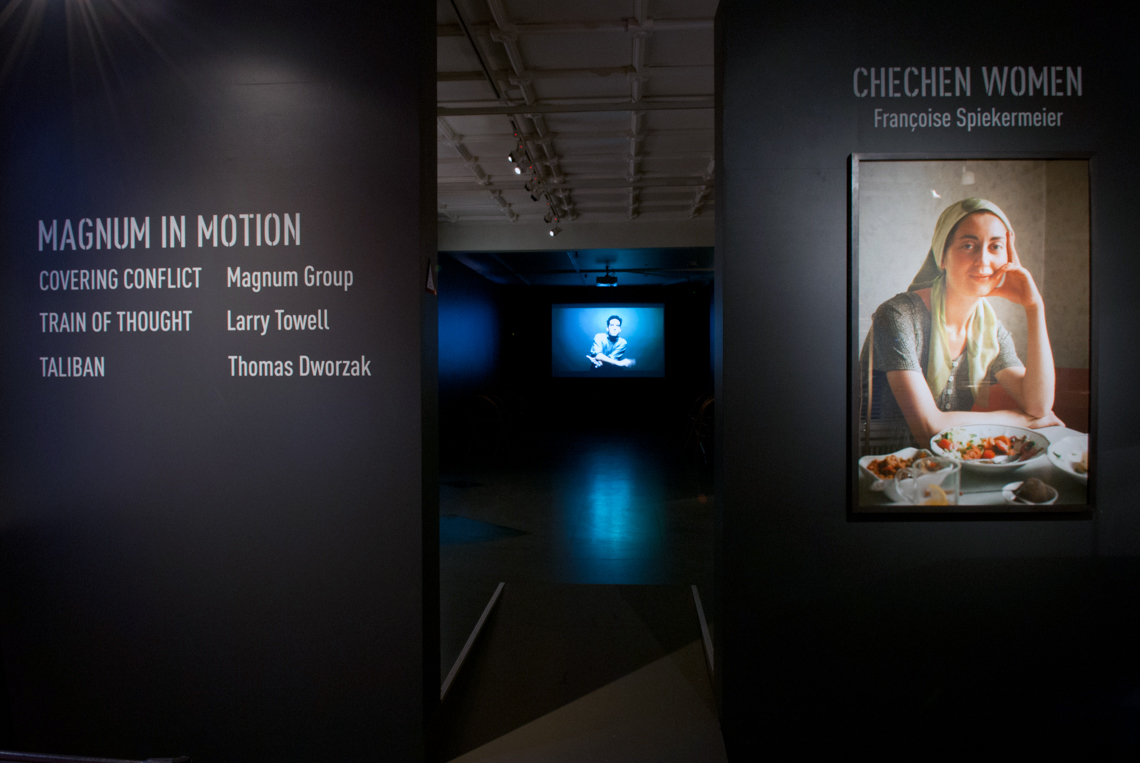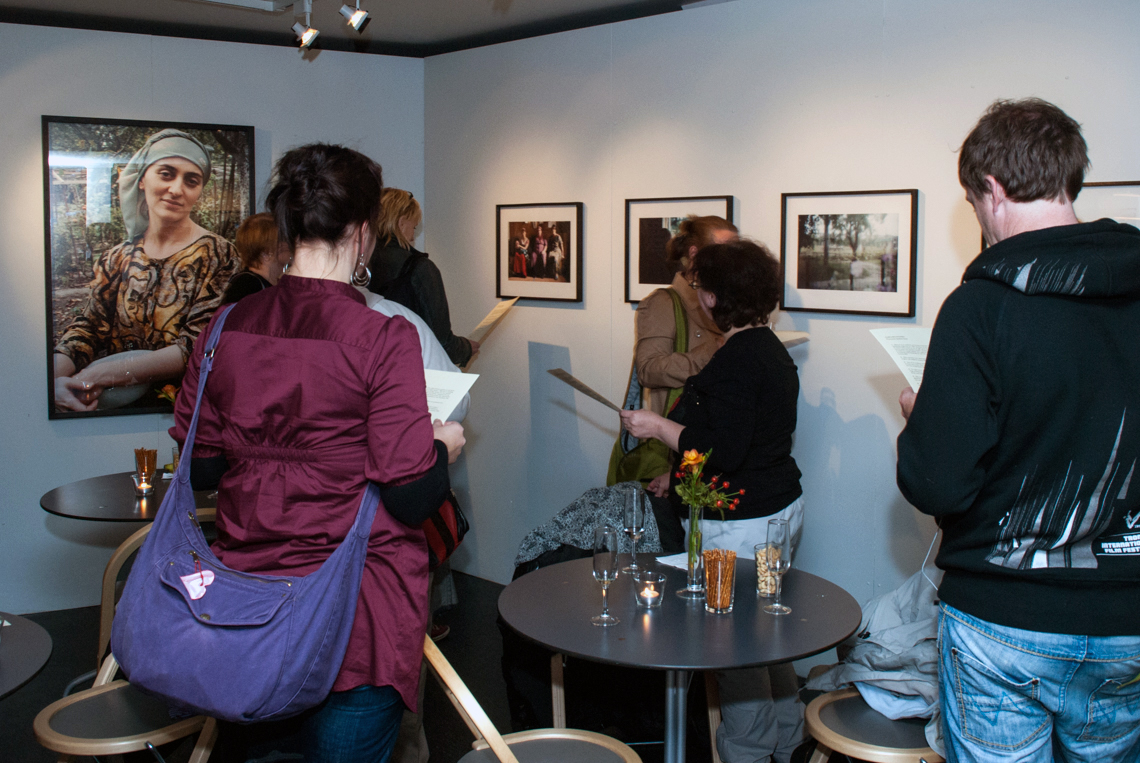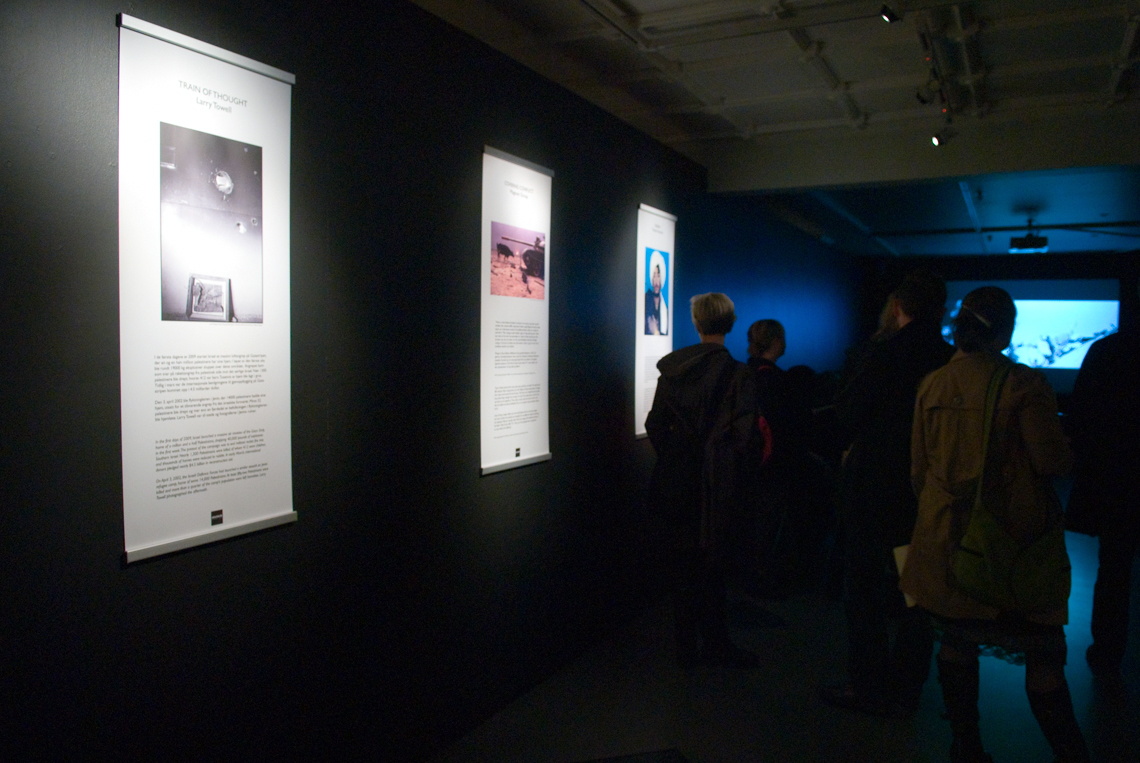In August 1999, Françoise Spiekermeier went to Chechnya to report for the magazine Paris Match, dressed as a local woman to hide her identity as a foreign journalist. She returned to Paris with portraits of Chechen women who tried to live their lives resisting the Russian pressure by any means. Each one in her own way.
”What they all have in common”, says Françoise, “is their dignity and a will, always, to remain beautiful in facing adversity. A good make-up becomes the best war painting, a protective camouflage as well as a provocative message to the enemy”.
In 2003, Françoise Spiekermeier, impressed by the personality of the Chechen journalist Tamara and her devotion to the Chechen people, proposed to film her and her work. From 1999 until the end of the second war in 2006, day after day, night and day, risking her life, Tamara records, photographs and videotapes crimes and abductions perpetrated by the Russian army on civilians. The documentary Tamara’s Eyes (18 min.) was shown on a French magazine « 7 à 8 » on the TV channel TF1, and in several Human Rights Film Festivals in Europe.
”Each of these pictures tell a story about pain, grief, fear and death” points the experienced BBC reporter Robin Lustig out in the Magnum Group’s presentation of images from major world events in the last 60 years, Covering Conflict. ”But there are a handful that tell another story, about hope, strength and courage”, he soon adds. They simply show us who we are and what we are capable of. They make us think about the world we live in and that all conflicts are about individuals. This is, to his opinion, what journalism should be about.
Some of these images reflect war and confrontations that we must never forget. And some of them are actually very beautiful. Do we belittle the reality by admiring the aesthetics?
In December 2001, Thomas Dworzak arrived in Kandahar, the former heart of the Taliban. Across from his hotel portrait studios were re-opening, after having been closed by the Taliban leader, Mullah Omar. They had been allowed to work partly when the Taliban realized photographs would be needed for forms of identification. When members of the Taliban came for the required identification pictures, they also posed for a more flattering portrait. The Taliban members were unable to return for their portraits since they had been forced to flee the advancing opposition. These images were taken clandestinely in the back rooms of the studio. The studio photographers gladly sold these images to Thomas.
On April 3, 2002, the Israeli Defence Forces had launched a similar assault on Jenin refugee camp, home of some 14,000 Palestinians. At least fifty-two Palestinians were killed and more than a quarter of the camp’s population was left homeless. Larry Towell photographed the aftermath.








